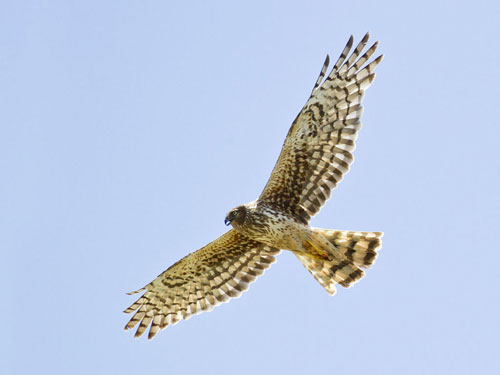SCOTS are being urged to be on the lookout for one of Britain’s rarest and most threatened birds of prey.
Hen harriers – large predatory birds found mainly in moorland areas – used to be a familiar sight across Scotland.
However, a recent count estimated that there are only 500 pairs left due to illegal persecution, a loss of nesting habitat and feeding ranges, and other predators eating their young.
In response, the Partnership for Action Against Wildlife Crime Scotland (PAW Scotland) has set up a ‘Heads Up for Harriers’ group to raise awareness.

They also aim to identify specific threats to the bird’s’ survival, so resources can be directed to safeguard and ultimately increase the population.
Professor Des Thompson, Chair of the Heads Up for Harriers Group, said: “Several national surveys of hen harriers have found they are faring well in some areas, but declining or absent altogether in others.
“In some places, there are no harriers at all because of persecution and a range of other factors. Working within PAW Scotland, we’re trying to develop a clearer picture of the distribution of harriers, and the work needed to improve their prospects.
“Although we receive a lot of records from members of bird groups, we need to add to these to get a complete picture of how hen harriers are faring in Scotland. We ask people to email any sightings to us at [email protected] or call 07767 671973.
This will help us improve our understanding of where harriers are seen and then remain to nest, move on or die for natural or persecution-related reasons.”
How to identify and report hen harrier sightings
Male hen harriers are distinctive, with a pale, ash-grey colour, black wing tips and a wingspan of just less than a metre.
Female hen harriers are slightly larger, with an owl-like face and mottled brown plumage, which helps to camouflage them when they nest on the ground. They have obvious horizontal stripes on their tails.
Please provide details of places where birds are seen (a six-figure grid reference is best), the time and date of the sighting and any notes on behaviour (for example hunting low, flying high up, calling or skydancing) when possible.
For more information, see http://www.gov.scot/Topics/Environment/Wildlife-Habitats/paw-scotland/what-you-can-do/hen-harriers
